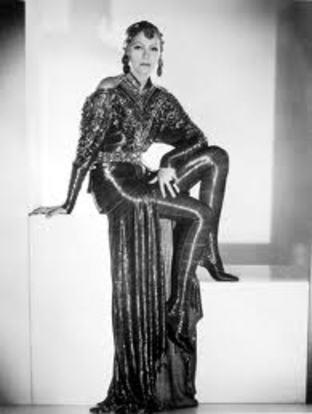WHEN Garbo uttered those immortal words, 'I want to be alone', I don't suppose she ever believed that they would be obeyed. Everybody wanted a piece of the mysterious Swedish beauty that was Greta Garbo. She would never be alone.
Garbo was born Greta Lovisa Gustafsson, in 1905, to parents Karl and Anna. Before hitting the big time, Greta modelled here and there, modelling hats for a catalogue and appearing in several promotional films. Garbo's first step into Hollywood came in 1924 where she acted in the film 'The Saga of Gosta Berling', directed by Mauritz Stiller. From there she starred in several silent films, and was one of the stars who successfully made the transition to 'talkies'.
And so a star was born. The sultry, seductive beauty acted in around 27 titles, most famously the films 'Mata Hari' (1931), 'Anna Karenina' (1935), and 'Camille' (1936). She was a fashion icon, with a Nordic beauty that women everywhere wished was their own. Her razor sharp jaw line and poised brow made her the icon that she was, and her delicate neck and deep, 'come-hither' eyes made her an object of desire for men, whether she liked it or not.
In her private life, Garbo preferred to dress comfortably, wearing Oxford men's shoes or flat dancer shoes, and very little jewellery. In public, she was well-known to wear a long pearl necklace, and was often photographed in the masculine style of dress that she preferred; this consisted of tailored shirts, silk ties and formal trousers lined with a thin belt. This almost conservative style of dressing is very much the opposite to the extravagant, often outlandish, costumes that she would don for her movies.
The man behind many of her stage gowns was designer Adrian Adolph Greenburg, better known as simply Adrian. Adrian designed for over 250 movies, most famously 'The Wizard of Oz' in 1939, where he designed the red-shoes worn by Judy Garland. Greta can be seen wearing one of Adrian's most exotic and, some say, over the top gowns in 'Mata Hari', in which Garbo portrays a notorious World War One spy. Garbo can be seen wearing a long, shimmering gown, embellished with beads and draped in scarves. The beaded headdress and long, dangling earrings give the entire garment a very Egyptian feel to it. The opulent outfit cost $2,000 to make and weighed a reported fifty pounds.
Adrian also designed a beautiful black silk evening dress, with a silver cloth neckline, that Garbo wore in the 1931 film 'Inspiration'. He's also the man behind the incredible black gown in 'Camille', a dress consisting of a snug bodice with a bountiful skirt that fell gracefully about her, encrusted with sequins and crystals.
Whether she was in the public eye or hiding away anonymously, Garbo's influence on fashion and women everywhere was inescapable. The soft, wavy hair was worlds away from the crisp 'black helmet' of Louise Brooks, but it was what women desired. The thin, arching eyebrows, combining severity and allure in one, were to die for. The more she wanted to be alone, the more people wanted her. She was glamour and mystery. After one of her last films, 'The Two-Faced Woman' in 1941, attempts to cast Garbo as an ordinary girl failed, and she left the studio. As Adrian put it,'When Garbo walked out of the studio, glamour went with her, and so did I.'







Comments: Our rules
We want our comments to be a lively and valuable part of our community - a place where readers can debate and engage with the most important local issues. The ability to comment on our stories is a privilege, not a right, however, and that privilege may be withdrawn if it is abused or misused.
Please report any comments that break our rules.
Read the rules here